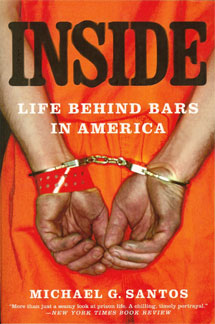Prison Reforms Can Help Solve Gang Problems
In the 15 December 2008 issue of U.S. News and World Report, Alex Kingsbury published a lengthy story entitled “The War on Gangs.” According to Mr. Kingsbury’s article, the FBI estimates that nearly 800,000 people belong to more than 26,000 gangs. Those numbers are high, yet they exclude prison gangs, a group with which I have the dubious privilege of knowing something about.
During the more than 21 years that I’ve served in prisons of every security level, I’ve been locked inside boundaries with thousands of gang members. In talking with them, I’ve developed a better understanding of what drives people to gang activity. In most cases, the lack of hope is a root cause. Miguel’s story kind of captures it all.
Miguel told me that he was reared in an impoverished community. His father was an alcoholic and a drug abuser who beat on Miguel’s mother. To escape the turmoil of home, Miguel ran the streets with his “homies.” They formed a juvenile gang that got its kicks by stealing cars and hustling drugs. When I met Miguel, he had adopted the nickname Sleepy. He was beginning to serve a 15 year prison term and he was kind of in the doldrums about the thought of serving so much time in prison. I had been incarcerated for several years when I met Miguel, and I suggested that he commit himself to education so that he could emerge from prison with more options.
“What I wanna go through all that school for? Ain’t no one gonna care ’bout what I do,” Miguel responded. “I gots to survive this beef. That’s what I’m talkin’ ’bout.”
Miguel chose his adjustment by eschewing the academic program I recommended and joining one of the Latin prison gangs. To prove his mettle, he stuck a rival gang member with an ice pick-type shank repeatedly, leaving his victim to bleed out a puddle of blood on a penitentiary staircase. Sleepy was sworn in to the gang, and advanced his ranking as a hard-core gang member inside the walls of the penitentiary.
As do all gangs, prison gangs threaten the public order. They spread hatred and thrive on illegal activities. Although law enforcement officers may struggle to thwart gang activity in the broader community, prison reforms could work wonders to persuade prisoners to choose more productive adjustment patterns than continuing their participation in gang activities.
When I spoke with Miguel and tried to persuade him to change his life by working to educate himself, he thought I was nuts. All Miguel could see was the 15 years he was scheduled to serve in prison. He knew that as a gang member, he stood a better chance of lifting his status in the penitentiary. He could not fathom a single benefit that would come with educating himself. Miguel could not comprehend the value in studying hard when the work he did might never be of any value to his life. As a gang leader, on the other hand, he might warrant a single cell and a lax job. Those were tangible goals that would be in addition to the deference other prisoners would show him. In prison, gang members hold a higher status than the prisoners who strive to educate themselves and prepare to live as law-abiding citizens.
Prison reforms ought to change such perceptions. Since administrators control the policies by which prisons run, they have an opportunity to issue incentives that would encourage good behavior and discourage bad behavior. If they were to issue incentives like more access to telephone calls or visits, and perhaps offer opportunities for prisoners to earn graduated levels of freedom through merit, I submit that more prisoners would adjust in productive ways. As long as administrators create infrastructures that show no difference between the individual who strives to reconcile with society and the individual who maintains antisocial tendencies, high recidivism rates and gang problems will persist.
In my article Making Better Choices, I offer suggestions that I hope other prisoners will follow. Yet until administrators welcome and support meaningful prison reforms, I think these institutions will continue to churn out failure.











Mr. Santos,
In your article “Prison Reforms Can Help Solve Gang Problems” you indicated incentives can be used to persuade prisoners to educate and prepare themselves to live as law-abiding citizens while in prison; steering them away from prison gangs. I completely agree with your idea of having incentives and making it easier for people who want to educate themselves to do so, however I do not completely understand the outcome that is expected of this reform.
My questions to you are, if these incentives are offered, what reaction do you expect from the prisoners given this opportunity? And from the prison gangs already establish within prison walls? Do you think the majority of the prison population will take advantage of these incentives?
In your article, you mention Miguel’s story and his attachment to a gang he formed back at home in lieu of a stable family environment. For prisoners like Miguel, do you think they would chose the incentives given to educate themselves, or turn to prison gangs for protection, security, and, to some, a family-like structure?
I enjoyed reading your thoughts about prison reforms and I thank you for all the time you’ve contributed in my understanding of Corrections.
Kasandra Fraga